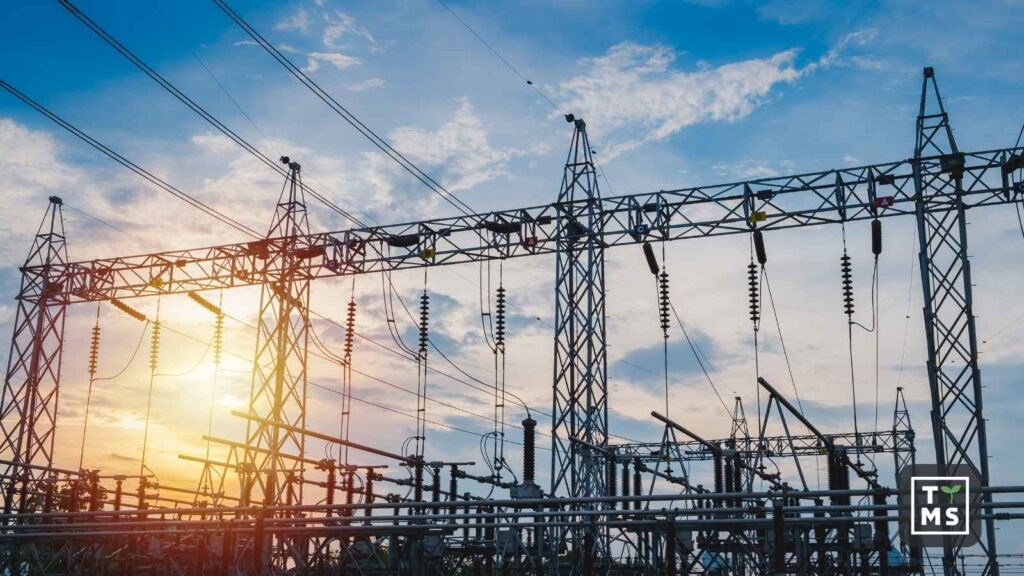
1. Digital Transformation of Energy Management: 2025 Guide
The energy sector sits at a fascinating crossroads where old-school operations meet cutting-edge digital tech. Here’s something that’ll grab your attention: half a trillion dollars was invested globally in data centers in 2024 alone. That’s massive infrastructure change happening right now. Organizations are dealing with mounting pressure for sustainability, efficiency, and rock-solid reliability. Digital transformation isn’t just nice to have anymore—it’s become essential for staying operational.
Energy companies across the globe get it now. Embracing digital technologies isn’t about grabbing shiny new tools; it’s about completely rethinking how operations work. Industry leaders have been deep in Europe’s energy transformation trenches and seen firsthand how smart digital moves can completely revolutionize infrastructure management. When you combine artificial intelligence, Internet of Things, and advanced analytics, you create incredible opportunities to optimize energy systems while meeting those tough environmental and regulatory demands.
The numbers don’t lie about urgency: data centers alone account for roughly 2% of global electricity and are projected to reach almost 12% of U.S. power demand by 2030. This explosive growth in digital infrastructure demand makes efficient energy management critical for both economic and environmental reasons.
2. Understanding Digital Transformation in Energy Management for 2025
Digital transformation in energy management represents a complete evolution that weaves advanced technologies into every corner of energy operations. This goes way beyond simple automation—we’re talking about intelligent systems that predict, adapt, and optimize energy flows in real-time. Industry leaders are seeing real results: energy companies actively implementing digital technologies are achieving operational cost reductions of 20-30%. That’s the kind of financial impact that gets board attention.
Several interconnected forces drive this transformation. Rising global energy demands paired with increasing environmental awareness create pressure for more efficient, sustainable operations. Meanwhile, tech advances have made sophisticated digital solutions more accessible and affordable than ever.
Modern energy management systems use interconnected technologies to create seamless operational environments. IoT sensors continuously watch equipment performance across distributed networks, while AI analyzes huge datasets to predict maintenance needs and optimize energy distribution. The results speak for themselves: productivity gains of 5-15% are reported among power producers and utility companies that have integrated these digital technologies.
The transformation also supports renewable energy integration, which brings unique challenges because of variable generation patterns. Digital systems can predict renewable generation patterns, automatically adjust grid operations, and coordinate distributed energy resources to maintain stability. This capability becomes increasingly vital as the energy mix shifts toward cleaner sources.
TTMS has been leading this digital evolution, developing advanced platforms specifically designed for managing complex energy systems. Our software solutions enable precise real-time energy flow management, automated fault detection and response, and customizable operational settings tailored to specific system requirements. These capabilities transform how energy companies approach infrastructure management, shifting from reactive to proactive operational models.
3. Core Technologies Revolutionizing Energy Management
3.1 Smart Grid Infrastructure and Grid Modernization
Smart grid technology represents the backbone of modern energy management, transforming traditional electrical grids into intelligent, responsive networks. The impact is measurable: in the United States, intelligent network management systems have led to a 44% reduction in power outages, translating to billions of dollars in savings through improved reliability.
Modernized grid systems use automation, advanced communication technologies, and sophisticated controls to enhance reliability, efficiency, and flexibility. They enable utilities to respond dynamically to changing demands while integrating diverse energy sources. Smart grid transformation requires comprehensive upgrades to existing infrastructure. These systems automatically detect faults, reroute power, and optimize distribution based on real-time demand, reducing operational costs while improving service reliability.
3.1.1 Advanced Metering Infrastructure (AMI)
Advanced Metering Infrastructure (AMI) transforms traditional meter reading into comprehensive data collection and analysis. AMI provides granular energy consumption data for accurate billing and personalized recommendations. These systems detect unusual patterns indicating equipment problems or theft, identify power quality issues, and reveal peak demand periods, helping utilities optimize strategies. AMI enables time-of-use pricing that encourages consumers to shift usage to off-peak periods, reducing peak generation needs and promoting efficient infrastructure use.
3.1.2 Distributed Energy Resource Management Systems (DERMS)
Distributed Energy Resource Management Systems (DERMS) coordinate and optimize decentralized energy assets across the grid, including solar panels, wind turbines, batteries, and demand response programs. Using advanced algorithms, DERMS forecast renewable output, predict demand, and coordinate asset dispatch to ensure efficient renewable energy use while maintaining grid reliability. Beyond operational efficiency, DERMS enable business models like virtual power plants, allowing aggregated distributed resources to participate in energy markets, creating revenue for asset owners while enhancing system reliability.
3.2 Internet of Things (IoT) and Industrial IoT Applications
The Internet of Things revolution connects previously isolated energy assets into integrated networks, providing unprecedented visibility and control. IoT deployment creates comprehensive sensing networks that monitor equipment performance, environmental conditions, and operations in real-time. Industrial IoT applications in energy management focus on mission-critical systems requiring high reliability and security, operating in harsh environments while providing accurate data for critical decisions. These robust systems are suitable for monitoring high-voltage equipment, generation facilities, and transmission infrastructure.
3.2.1 Smart Sensors and Real-Time Monitoring
Smart sensors continuously track temperature, pressure, vibration, and electrical characteristics, providing data to optimize equipment performance and predict maintenance needs. Advanced sensors detect subtle changes indicating developing problems, such as bearing wear or electrical hot spots, preventing minor issues from becoming major outages. When integrated with analytics platforms, these systems enable condition-based maintenance programs that reduce costs while improving reliability and extending asset life cycles.
3.2.2 Connected Energy Assets and Equipment
Connected energy assets enable centralized monitoring and control of distributed infrastructure, allowing remote diagnostics and automated adjustments to optimize system performance. Data from these assets feeds into management systems that track performance trends and maintenance history, supporting informed decision-making. These assets can participate in automated control schemes that optimize energy flows, such as batteries charging during low-price periods and discharging during peak demand to maximize value while supporting grid stability.
3.3 Artificial Intelligence and Machine Learning Integration
Artificial intelligence and machine learning technologies process the vast amounts of data generated by modern energy systems to uncover patterns, optimize operations, and automate decision-making processes. As one industry CTO notes, “Artificial Intelligence is becoming a key pillar in the energy sector, enabling companies to personalize their services and optimize processes”, improving both energy efficiency and customer relationships.
AI and ML systems continuously learn from operational data, improving their accuracy and effectiveness over time. This learning capability enables energy systems to adapt to changing conditions and optimize performance based on historical patterns and current circumstances, resulting in more efficient operations, reduced costs, and improved reliability.
3.3.1 Predictive Analytics for Energy Forecasting
Predictive analytics use historical data, weather patterns, and operational parameters to forecast energy demand, renewable generation, and equipment performance, enabling utilities to optimize schedules and prepare for peak periods.
Weather-dependent renewables require sophisticated forecasting models. Solar generation forecasts account for cloud cover and atmospheric conditions, while wind predictions consider speed, direction, and turbulence.
Demand forecasting incorporates weather, economic activity, and social patterns to predict electricity consumption, supporting resource planning and market participation while helping utilities balance supply availability with peak demand requirements.
3.3.2 AI-Powered Energy Optimization Algorithms
AI-powered optimization algorithms automatically adjust system parameters to minimize energy waste, reduce costs, and maximize efficiency by processing complex problems with multiple variables and constraints.
Building energy management systems use AI to coordinate heating, cooling, and lighting based on occupancy, weather, and energy prices, learning occupant preferences to balance comfort with minimal energy use.
Grid-level optimization algorithms coordinate generation resources, storage systems, and demand response programs, considering fuel costs, renewable availability, and grid constraints to optimize dispatch schedules for cost-efficiency and reliability.

3.4 Digital Twin Technology for Energy Infrastructure
Digital twin technology creates virtual replicas of physical energy assets that mirror their real-world counterparts in real-time. These digital models combine sensor data, operational parameters, and system characteristics to provide comprehensive insights into asset performance and behavior.
The virtual nature of digital twins allows for experimentation and scenario testing that would be impossible or dangerous with physical assets. Operators can test different operating strategies, evaluate the impact of proposed modifications, and assess system responses to various conditions, supporting informed decision-making and risk mitigation.
3.4.1 Virtual Modeling of Energy Systems
Virtual modeling creates detailed representations of energy systems, capturing physical characteristics, constraints, and performance behaviors through engineering principles and data. Multi-domain models represent electrical, mechanical, thermal, and control aspects to simulate component interactions and predict system behavior. These models support engineering analysis, design evaluation, operational planning, and training for operators to develop optimal strategies.
3.4.2 Simulation and Scenario Planning
Simulation capabilities enable energy organizations to test responses to hypothetical events such as equipment failures, demand spikes, or extreme weather conditions. These simulations help develop contingency plans, evaluate system resilience, and identify potential vulnerabilities.
Monte Carlo simulations can evaluate system performance under uncertainty by running thousands of scenarios with different input parameters. These statistical approaches provide insights into the range of possible outcomes and the probability of different events, supporting risk assessment and informed decisions about system design and operating strategies.
3.5 Blockchain and Distributed Ledger Technologies
Blockchain technology introduces transparency, security, and automation to energy transactions and data management. Distributed ledger systems create immutable records of energy transactions, enabling peer-to-peer trading, automated contract execution, and secure data sharing.
The decentralized nature of blockchain systems eliminates the need for traditional intermediaries in energy transactions. Smart contracts can automatically execute trades, settlements, and payments based on predefined conditions, reducing transaction costs and processing times while ensuring transparent and secure exchanges.
3.5.1 Peer-to-Peer Energy Trading Platforms
Peer-to-peer energy trading platforms enable direct transactions between energy producers and consumers without traditional utility intermediaries. These platforms use blockchain technology to facilitate secure, transparent trades while automatically handling settlements and payments.
Residential solar panel owners can sell excess generation directly to neighbors through P2P platforms, creating local energy markets that reduce transmission losses and support community energy independence. The trading platforms handle price discovery, matching buyers and sellers, and ensuring fair market operations.
3.5.2 Energy Certificate and Carbon Credit Management
Blockchain technology provides secure, transparent tracking of renewable energy certificates and carbon credits throughout their lifecycle. These systems create tamper-proof records of certificate issuance, ownership transfers, and retirement, ensuring the integrity of environmental markets.
Smart contracts can automatically issue certificates when renewable energy is generated and verified by IoT sensors. The certificates can then be traded on blockchain-based marketplaces with full transparency and traceability, eliminating manual processes and reducing the risk of double-counting or fraud.
4. Real-World Success Stories: Digital Energy Management in Action
The impact of digital transformation becomes clear when examining actual implementations. Recent case studies from Europe and North America demonstrate the tangible benefits of strategic digital adoption.
4.1 RWE’s AI-Driven Grid Optimization
German energy giant RWE has deployed artificial intelligence and big data analytics across its operations, achieving grid stabilization improvements of up to 15%. The company deployed Germany’s first commercial megabattery and expanded AI-driven forecasting capabilities to support more accurate renewable energy integration and improved grid operation across Germany, Czech Republic, and the United States.
4.2 Duke Energy’s Smart Grid Revolution
Duke Energy’s comprehensive smart grid deployment, featuring IoT sensors and smart meters, has delivered impressive results. The utility achieved a 30-50% reduction in equipment downtime through predictive maintenance capabilities. Enhanced grid reliability, real-time performance tracking, and automated demand adjustment have enabled widespread real-time energy consumption analysis and optimization.
4.3 Enlog’s Energy Efficiency Breakthrough
European energy management company Enlog has demonstrated the power of AI-powered energy management through its IoT sensor networks. The company’s “Smi-Fi” system achieved electricity consumption reductions of up to 23% for business clients by seamlessly integrating IoT into legacy electrical systems for predictive demand modeling and consumption reduction.
TTMS’s Unified Application Drives Efficiency in Energy Operations
TTMS has successfully streamlined and optimized processes for a global energy management leader by consolidating and migrating legacy environments into a unified, scalable platform. Since partnering in 2010, TTMS established a dedicated team—now comprising approximately 60 specialists—to develop, maintain, and continuously enhance this integrated solution. The comprehensive application replaced multiple dispersed tools, addressing significant challenges including the absence of centralized management for relay security tools and fragmented legacy systems. By implementing a unified platform, TTMS achieved substantial operational improvements, such as enhanced process efficiency, reduced maintenance costs, and significantly improved scalability. This transformation enables the client to seamlessly expand and evolve their systems without undergoing extensive migrations. This long-term collaboration highlights the practical value of strategic digital transformation, demonstrating measurable efficiency gains, cost reductions, and sustainable operational excellence.
These success stories illustrate the practical benefits of digital transformation, moving beyond theoretical advantages to demonstrate measurable operational improvements and cost savings.

5. Strategic Implementation of Digital Energy Management
5.1 Building a Digital Energy Management Roadmap
Developing a comprehensive digital transformation strategy requires careful assessment of current capabilities, clear definition of objectives, and systematic prioritization of technology investments. Organizations must balance ambitious transformation goals with practical implementation constraints, creating roadmaps that deliver measurable value while building toward long-term objectives.
Industry analysis indicates that over 30% of surveyed professionals identify closing energy projects that demonstrate measurable, transparent value as the industry’s top focus for 2025. This emphasis on demonstrable ROI shapes how organizations approach digital transformation planning.
The strategic planning process begins with evaluating existing infrastructure, processes, and capabilities to identify gaps between current and desired states, highlighting high-impact areas for digital technologies. Technical, financial, and organizational factors must be considered for successful implementation.
TTMS implements digital energy management through assessment and customized solutions, with experience from Europe’s leading energy providers demonstrating the importance of aligning technology with organizational needs and constraints.
5.2 Data Integration and Management Strategies
Successful digital transformation requires effective data integration that unifies information from diverse sources into actionable insights. Energy organizations typically have data scattered across operational technology, business applications, and external systems.
Data management must handle both structured and unstructured data from SCADA systems to weather forecasts. Integration architecture needs to balance real-time processing requirements with historical analytics capabilities, performance needs, cost, and scalability.
Strong data quality and governance frameworks ensure integrated information remains accurate, consistent, and secure, establishing standards for data handling while protecting sensitive information.
5.3 Cloud Computing and Edge Computing Solutions
Cloud computing provides scalable infrastructure and analytics for digital energy management without major hardware investments. Edge computing processes data locally, reducing latency for critical operations that need immediate responses.
Hybrid architectures optimize performance by using edge computing for time-critical operations while leveraging cloud for complex analytics and centralized management.
TTMS develops integrated solutions combining both technologies, enabling real-time grid monitoring while ensuring seamless hardware connectivity.
6. Overcoming Digital Transformation Challenges
6.1 Cybersecurity and Data Protection Strategies
Digital transformation expands energy organizations’ attack surface through connected systems, IoT devices, and cloud platforms. For critical energy infrastructure, cybersecurity is fundamental, not optional.
Multi-layered security combines network security, endpoint protection, and application security with encryption, robust authentication, and continuous monitoring.
The evolving threat landscape requires ongoing security updates, vulnerability assessments, and 24/7 monitoring with AI-powered threat detection and response.
6.2 Securing Critical Energy Infrastructure
Critical energy infrastructure requires specialized security measures that address both cyber and physical threats. Control systems, generation facilities, and transmission networks must be protected from attacks that could disrupt service or damage equipment.
Air-gapped networks isolate critical control systems from external connections, reducing the risk of remote attacks. When connectivity is required, secure communication channels and strict access controls limit exposure. Regular security assessments identify potential vulnerabilities and ensure that protection measures remain effective against evolving threats.
6.3 Legacy System Integration and Interoperability
Energy organizations must carefully integrate new digital technologies with diverse legacy systems to maintain operational continuity. System integration strategies need to address technical compatibility, data format differences, and workflow alignment, with middleware solutions bridging gaps and API management platforms providing standardized interfaces. Comprehensive testing—including functional verification, performance assessment, and failure mode analysis—along with incremental migration strategies help ensure safe, correct operation while reducing risk.
6.4 API Management and System Integration
Application Programming Interfaces provide standardized methods for different systems to communicate. Effective API management ensures security, reliability, and documentation.
RESTful APIs enable cross-platform system integration, simplifying connectivity while maintaining flexibility for future additions.
Monitoring tools track API performance to identify issues and optimization opportunities, while rate limiting prevents system overload and ensures fair resource allocation.
6.5 Investment Planning and ROI Considerations
Digital transformation requires significant investments balanced against financial constraints, with clear value propositions for stakeholders. Total cost of ownership analysis must consider implementation costs, operational expenses, maintenance, upgrades, and system impacts. Phased implementation spreads costs while delivering incremental benefits, with early wins building support for continued investment. Organizations typically see positive ROI within 2-5 years.
6.6 Cost-Benefit Analysis Framework
Comprehensive cost-benefit analysis evaluates financial impacts (cost savings, revenue increases, risk reduction) and non-financial impacts (improved safety, customer satisfaction, regulatory compliance) of digital transformation initiatives.
Quantitative analysis monetizes benefits like reduced maintenance costs, improved energy efficiency, and decreased outage duration. Companies implementing digital technologies typically achieve 20-30% operational cost reductions.
Risk assessment evaluates potential negative outcomes and probabilities to balance investment decisions, while mitigation strategies reduce negative impacts while preserving benefits.
6.7 Change Management and Skills Development
Successful digital transformation requires organizational change that goes beyond technology implementation. People, processes, and culture must evolve to realize the full benefits of digital technologies.
Communication strategies keep stakeholders informed about transformation goals, progress, and expected impacts. Regular updates build awareness and support while addressing concerns and resistance. Leadership commitment and visible sponsorship demonstrate organizational priority and encourage employee participation.
Training and development programs equip employees with skills needed to operate new technologies and processes. Competency frameworks identify required capabilities and guide development activities. Continuous learning approaches ensure that skills remain current as technologies evolve.
6.8 Building Digital-First Energy Culture
Cultural transformation involves changing mindsets, behaviors, and practices to embrace digital approaches to energy management. Digital-first culture prioritizes data-driven decision-making, continuous improvement, and innovation.
Innovation programs encourage employees to identify opportunities for digital solutions and propose improvements to existing processes. Recognition and reward systems reinforce desired behaviors and celebrate successful innovations.
Collaboration tools and practices enable cross-functional teams to work effectively on digital initiatives. Digital workspaces and communication platforms support distributed teams while knowledge management systems preserve and share insights.
7. Emerging Trends and Future Outlook for 2025
7.1 Energy-as-a-Service (EaaS) Business Models
Energy-as-a-Service (EaaS) transforms traditional energy models into service-based approaches where providers handle infrastructure, management, and optimization while customers pay for services rather than equipment. Subscription models offer predictable costs and guaranteed service levels, simplifying budgeting while providers manage maintenance, optimization, and compliance. EaaS enables quick adoption of advanced technologies without significant capital investment by leveraging economies of scale across multiple customers.
7.2 Autonomous Energy Systems and Self-Healing Grids
Autonomous energy systems represent the next grid intelligence evolution, offering self-monitoring, diagnosis, and healing capabilities. They automatically detect faults, isolate affected areas, and restore service without human intervention.
Self-healing grid technologies minimize outages by reconfiguring power flows around damaged components. Distribution automation isolates faults within seconds and immediately restores power to unaffected areas.
Machine learning analyzes historical and real-time data to predict failures before they occur, enabling proactive maintenance and system adjustments that prevent outages rather than just responding to them.
7.3 Integration with Electric Vehicle Infrastructure
The growing EV adoption presents both challenges and opportunities for energy management. While EV charging increases electricity demand during peak periods, smart charging technologies can manage this load and support grid operations.
Smart charging systems coordinate charging with grid conditions, renewable availability, and electricity pricing, delaying charging during peak demand and accelerating when renewables are abundant.
Bidirectional charging allows EVs to provide grid services like frequency regulation, demand response, and backup power,
7.4 Expert Predictions for 2025
Industry leaders are optimistic about the continued acceleration of digital transformation. As one senior analyst notes: “The energy and digital revolutions must advance hand in hand. Their convergence is not inevitable, but it is essential for building a more efficient, sustainable, and future-ready energy transition”.
Key priorities for 2025 include:
- AI and Automation: Personalizing services, optimizing resource management, and enabling predictive maintenance
- IoT and Big Data: Real-time monitoring, predictive maintenance, and dynamic demand response
- 5G Connectivity: Enabling real-time data integration at scale with immersive technologies like VR/AR for training
- Grid Modernization: Smart grids, decentralized energy resources, and advanced grid-edge analytics
According to the Spacewell Energy Survey 2024, “Technology remains a cornerstone of energy management innovation. The ability to fine-tune energy usage through data analytics and intelligent automation allows organizations to reduce waste, cut costs, and meet evolving regulatory demands.”
7.5 Sustainability and ESG Reporting Automation
ESG reporting requirements are expanding due to stakeholder demands for transparency. Automated systems collect, analyze and report sustainability metrics in real-time, monitoring energy usage, emissions, and resources while identifying trends and anomalies. Standardized frameworks with automated data collection reduce administrative burden, improve data quality, and ensure accurate performance metrics through operational system integration.

8. Getting Started with TTMS: Your Digital Energy Management Action Plan
8.1 Initial Assessment and Technology Selection
Starting your digital transformation journey requires evaluating current capabilities and challenges. TTMS conducts thorough assessments of existing systems, integration opportunities, and organizational readiness.
Technology selection must align with operational requirements and strategic objectives. TTMS helps evaluate options and recommend solutions that balance functionality, cost, and implementation complexity based on our energy sector experience.
Stakeholder engagement throughout the process ensures solutions address real operational needs and gain organizational support, helping identify requirements and build commitment to transformation goals.
8.2 Phase-by-Phase Implementation Strategy
TTMS advocates phased digital transformation, starting with foundational technologies like data integration and monitoring. Later phases introduce advanced analytics and automation. Each phase includes clear objectives and success metrics, with regular reviews to adjust strategies based on lessons learned. Parallel development and testing methodologies minimize operational disruption while ensuring new systems meet all requirements.
8.3 Measuring Success and Continuous Improvement
Success measurement frameworks track technical performance and business value delivery through indicators like system reliability, cost savings, and customer satisfaction.
Continuous improvement processes ensure digital systems evolve to meet changing needs. TTMS provides ongoing support to maximize technology investments.
Benchmarking against industry standards helps organizations understand their performance and identify improvements. TTMS leverages energy sector experience to provide comparative insights and recommendations
If you are intrested in digital transformation of your energy company contact us now!
What is digital transformation of energy management?
Digital transformation of energy management involves integrating advanced technologies such as IoT, AI, and blockchain into energy operations to improve efficiency, reliability, and sustainability. This transformation encompasses everything from smart grid infrastructure to automated energy optimization systems.
How do IoT and AI improve energy management?
IoT devices provide real-time monitoring and control capabilities across energy infrastructure, while AI algorithms analyze data to optimize operations, predict maintenance needs, and automate decision-making. Together, these technologies enable more responsive and efficient energy systems.
What ROI can organizations expect from digital energy investments?
Organizations implementing digital technologies typically see operational cost reductions of 20-30% and productivity gains of 5-15%. Most organizations achieve positive ROI within 2-5 years, with some seeing benefits within 18 months.
What are the main challenges in implementing digital energy solutions?
Key challenges include integrating new technologies with legacy systems, ensuring cybersecurity, managing data integration complexity, securing adequate investment, and developing organizational capabilities. Successful implementation requires comprehensive planning and phased approaches.
How can organizations measure the ROI of digital energy investments?
ROI measurement should consider both quantifiable benefits such as cost savings and efficiency improvements, and strategic advantages including improved reliability and sustainability performance. Comprehensive cost-benefit analysis frameworks help organizations evaluate investment outcomes.
What cybersecurity measures are essential for digital energy systems?
Essential measures include multi-layered security architectures, encryption of data and communications, robust access controls, continuous threat monitoring, and incident response procedures. Security must be integrated into system design rather than added as an afterthought.